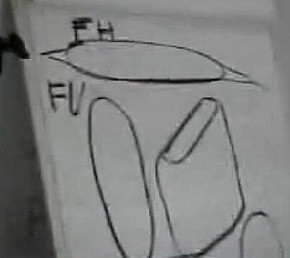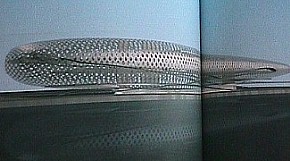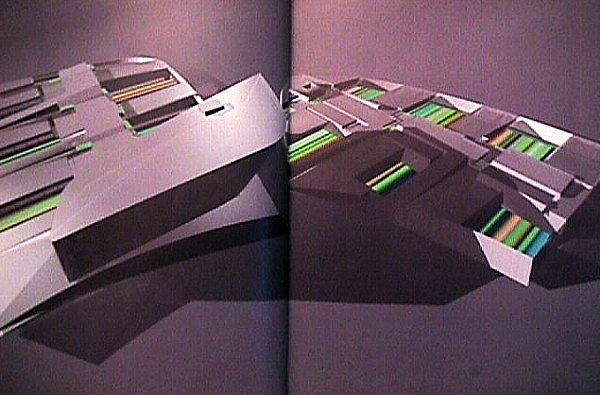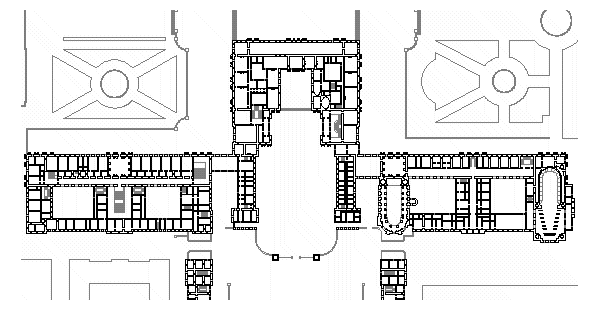2008.12.30 09:00
pragmatists turning political?
context/inspiration
Pier Vittorio Aureli's "Toward the Archipelago: Defining the Political and the Formal in Architecture" (in Log 11, Winter 2008) lays out the context of Alejandro Zaera-Polo's "The Politics of the Envelope" (in Log 13/14, Fall 2008).
within Toward the Archipelago:
Urbs vs. Civitas
Urbanization
Infinity and Enclaves of Urbanization
The Enclave and the Landmark
The Political
The Formal
The Archipelago
Architecture
passages from The Political:
"Politics arises between men, and it is established as a relationship." (Arendt)
The space in-between can only materialize as a space of confrontation between parts. Its existence can only be decided by the parts that form its edges.
In the dual terms of Carl Schmitt, the space in-between is formed by the decision of who is a friend and who is an enemy. This decision does not exist "as found" in between the parts, but arises from the position taken by the parts that form this space.
...the notion of agonism--the counterpositing of parts--functions as a critical mirroring of oneself via the other to the extent that it is possible to say that to make a collective claim of political autonomy, one must first declare one's counterpoint.
The enemy, on the other hand, estranges us from our familiar self-perception and gives us back the sharp contour of our own figure, of our own position. What counters us inevitably constitutes the knowledge of our own limit.
The political cannot be reduced to conflict per se; it indicates the possibility of conflict and as such calls for its resolution. Even if it means slightly confounding the terms of Hegel's dialectic, the political realizes the resolution of conflict not by a synthesis of confronting parts, but by recognizing the opposition as a composition of parts. This suggests that it is possible to theorize a phenomenological and symbolic coincidence between political action and the form of an object.
[This is the space of the politics of the envelope.]
Both deal with the fundamental question of defining the limits that constitute related but different parts. From this vantage point--the question of a composition of parts, the question of limits posed through the knowledge of the other--I propose to redefine the concept of the formal.
aggregate base
2008.12.26 12:37
pragmatists turning political?

AZP from the Berlage lecture
top: flat horizontal, permeable, social mobility, handling flows, movement

UN Studio, Yokohama Port Terminal, 1994
I'm wondering whether a hyper-envelope can deliver a hyper-politicization.
some coincidental reading from earlier this morning...
"Vico's own approach to this new science was by way of a new theory of knowledge. The first clear trace of this appears in his inaugural oration of 1708 comparing ancient and modern methods of study. The moderns have instituted great improvements in the physical sciences, but have unduly depreciated those studies whose matter depends on the human will and therefore involves vicissitude and probability--languages, poetry, eloquence, history, jurisprudence, politics."
AZP's language does slide easily (to other projects), and that is because much of it is at base a typological analysis.
AZP's language also slides easily from (historical) formal analysis to prescriptive methodology.
| |
2008.12.25 19:05
pragmatists turning political?
When AZP writes "or to explain the breakdown of the correlation between interior and exterior and private and public, are legitimate poltical performances," it only seems fair to include UN Studio's work.
I mentioned UN Studio's Yokohama terminal project because "the organizing principle of the terminal is the structural association of architecture to infrastructure and landscape; garden-like voids are absorbed into the architecture and then proceed to transform it" and one of the section drawings calls out a 'climatic facade system'. Further reading reveals some strangeness, however. "This design-by-section represents one of our first, incomplete, experiments with 4-D architecture. The building itself was never designed, but 30 sections were worked out, after which 3-D Studio was used to fill in what was left." "Finally a photo-shopped skin was wrapped around the resulting composition in order to simulate the appearance of a building." Politics of the envelope indeed?
from Webster's Third International Dictionary:
politics 1 a : the art or science of government : a science dealing with the regulation and control of men living in society (as nations or states) in both internal and external affairs : the art of adjusting and ordering relationships between individuals and groups in a political community
Electronic Calculation Center Olivetti at Rho-Milan
The huge development is divided into three construction stages:
First stage: main entrance with restaurants, library and other social facilities, then the first sguare workshop block measuring 350 ft. x 350 ft. Above this block are ten storeys of research laboratories.
The assembly shops are at ground level. The entrances, however, are located at roof level. By means of an entrance ramp the employees reach the connecting corridors which lead to the three [amoebae]-shaped locker and washroom blocks. One enters the various shops at ground level by means of stairways.
The workrooms receive well-distributed daylight from above; there is also a plantation on the roof and a sprinkler system which provides cooling during hot weather.
Again AZP: "...certain manipulations of the ground and the roof indicate the politicization of nature."
2008.12.24 13:06
North Direction in Drawing
It was like a week after New Years 1987, and we just finished dinner in a restaurant on one of the more secluded beaches of Manly, Australia. There were five of us, my cousin who moved to Australia from post-war Germany, a sister and brother born in Australia, a young Tasmanian woman and me, the only northern hemisphere resident. There was a crescent moon overhead a little over the ocean. It struck me as odd, and I said so.
"what do you mean?!?"
"well, it's like up-side down or something. I've never seen it like that before."
"how do you usually see it then?"
"wait. let me try something."
I turned around and looked up bent over backwards.
"there. this is how I usually see it."
then the rest of them did the same thing, bobbing their heads around taking it all in.
I watched them and then cracked up laughing.
"you guys now look as drunk as you actually are!"
and we all just stared laughing. and then it hit me.
"wait, where's the Southern Cross?"
the brother, "I'll find it. there it is!"
"Ah."
| |
2008.12.24 10:29
pragmatists turning political?
"Instead of a revolutionary architecture, an architecture of explicitation would imply more complex political directionalities as it transforms the space and the material organization of the built environment, even if those transformations cannot be inscribed in a holistic political program. For architecture to express the domestication of density and high-rise life through specific massing strategies in tall buildings, to convey that tendencies in the articulation of the building envelope capture the new political affects, to communicate that certain manipulations of the ground and the roof indicate the politicization of nature, or to explain the breakdown of the correlation between interior and exterior and private and public, are legitimate political performances."
AZP
That is what I assume to be the gist of the so-called general theory of the building envelope as expressed within 'The Political Agency of Dimension' within "The Politics of the Envelope".

Because I see all this relating to Le Corbusier's late Olivetti project first, I looked again at UnStudio's Intramural Centre (project, 1994) as presented within the "Effects" book of MOVE (1999), since this project too reenacts the Le Corbusier paradigm. And then, as I looked through the rest of MOVE, I began to see that the 'envelope' was already often taken into a kind of 4th dimension, a kind of hyper-envelope. Somewhat ironically, UnStudio's proposal for the Yokohama Port Terminal already portends what ZP is now espousing.
Although now going on ten years old, MOVE is still very timely. There are even projects vis-à-vis icons.
[The above is just a broad outline of connected but not-so-random thoughts. I hope to pursue a further analysis of the "politics of the envelope" through the inclusion of UnStudio's precursive work.]
2008.12.23 20:29
pragmatists turning political?
I'm using "reenactionary" more in terms of how ZP's designs 'reenact' the mat/box/blob paradigm of Le Corbusier's Electronic Calculation Center Olivetti at Rho-Milan. Although intrigued by ZP's 'new politics of the envelope' I'm not sure 'politics' is the right word to describe what it's really about, but it might just be right.

ZP notes how in the past it was in the plan where 'politics' was found, whereas he now see the politics in the envelope, and there seems to be something to that. Just recently I looked closely at the plan of the Palace of Versailles (when I was also reading ZP's essay in Log), and besides the political implication of the King's Bedroom on axis in the center, the similarity in plan of the Chapel and the Opera off to the side respectively got me thinking not just of their relative marginal positions, but how both plans represent 'theaters'. Anyway, if ZP's politics of the envelope can operate/communicate in the same type of way, it seems that would make for a novel/fecund design methodology.
|